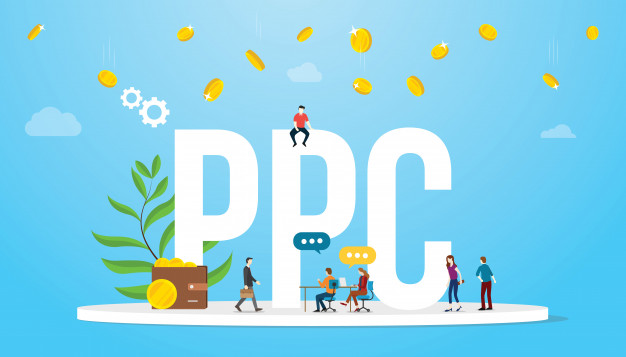I. Introduction
Social media marketing has become an essential part of any digital marketing strategy. With over 4.2 billion social media users worldwide, platforms like Facebook, Instagram, Twitter, and LinkedIn provide businesses with unparalleled opportunities to connect with their target audiences and build brand awareness.
However, as social media usage has grown, so has the competition for users’ attention. With so much content vying for users’ eyeballs, it can be difficult for businesses to stand out and achieve their social media marketing goals.
To succeed in today’s crowded social media landscape, businesses must leverage both paid and organic tactics to achieve maximum impact. In this article, we’ll provide an in-depth guide to advanced social media marketing, including best practices for both paid and organic tactics, and strategies for integrating the two to achieve optimal results.
II. Paid Social Media Marketing
Paid social media marketing involves using paid advertising on social media platforms to reach a wider audience and drive specific actions, such as clicks, conversions, or app installs. Some of the benefits of paid social media marketing include:
• Increased reach: With paid advertising, businesses can reach a much larger audience than they could with organic content alone.
• Improved targeting: Social media platforms offer advanced targeting options that allow businesses to reach specific demographics, interests, behaviors, and more.
• Measurable results: Paid social media campaigns provide detailed metrics and analytics, allowing businesses to track and measure the success of their campaigns and make data-driven decisions.
To get the most out of your paid social media campaigns, it’s important to understand the different types of paid advertising available on each platform and how to create effective campaigns that resonate with your target audience. In the next section, we’ll dive into some best practices for creating and optimizing paid social media campaigns.
III. Organic Social Media Marketing
Organic social media marketing refers to the process of creating and sharing content on social media platforms without paying for advertising. While organic social media marketing can be time-consuming and require significant effort, it is a cost-effective way for businesses to build a loyal following, increase engagement, and drive traffic to their website or other digital properties.
One of the key advantages of organic social media marketing is that it allows businesses to build authentic relationships with their target audience. By sharing high-quality, engaging content, businesses can demonstrate their brand personality and values, which can help to establish trust and credibility with their followers.
To succeed in organic social media marketing, businesses need to have a deep understanding of their target audience and create content that resonates with them. This requires a strategic approach to content creation, which includes:
1. Identifying your target audience: To create effective content, businesses need to understand who their target audience is and what they’re looking for. This involves conducting market research, analyzing social media data, and developing detailed buyer personas.
2. Creating engaging content: Once you have a clear understanding of your target audience, the next step is to create high-quality, engaging content that resonates with them. This can include a mix of different types of content, such as blog posts, videos, infographics, and more.
3. Optimizing content for social media: To maximize the impact of your organic social media marketing efforts, it’s important to optimize your content for each social media platform. This includes using the right image sizes, hashtags, and captions, as well as experimenting with different posting times and frequency.
4. Building a strong social media following: Finally, to get the most out of your organic social media marketing efforts, you need to build a strong following of engaged users. This involves regularly interacting with your followers, responding to comments and messages, and sharing user-generated content.
While organic social media marketing can take time to produce results, it is a powerful way for businesses to build authentic relationships with their audience and drive long-term growth.
IV. Advanced Paid Social Media Marketing Techniques
Paid social media marketing is a key part of any successful digital marketing strategy, and the most effective campaigns require a deep understanding of the various techniques and tools available. In this section, we’ll cover some advanced paid social media marketing techniques that can help businesses achieve even better results.
1. Retargeting Campaigns
Retargeting campaigns are a powerful way to reach users who have previously interacted with your brand, such as by visiting your website, adding items to their cart, or filling out a form. Retargeting ads are shown to users who have already shown an interest in your brand, making them more likely to convert.
To set up a retargeting campaign, businesses need to install a tracking pixel on their website or other digital properties. This pixel allows you to track user behavior and target them with relevant ads across social media platforms.
2. Lookalike Audiences
Lookalike audiences are a targeting option available on most social media platforms, which allow businesses to reach new users who are similar to their existing customers or followers. Lookalike audiences are created by analyzing the characteristics and behaviors of your existing audience and finding similar users who are likely to be interested in your brand.
To create a lookalike audience, businesses need to upload a list of their existing customers or followers, which is then used to create a profile of your ideal customer. The social media platform then uses this profile to identify other users who match those characteristics.
3. A/B Testing
A/B testing is a powerful way to optimize your paid social media campaigns by testing different variations of your ads to see which performs best. A/B testing involves creating multiple variations of your ad, with small differences in elements like the image, copy, or call-to-action.
By running these variations simultaneously and measuring the results, businesses can identify which ad performs best and use that knowledge to improve their campaigns over time.
4. Custom Audiences
Custom audiences are another powerful targeting option available on most social media platforms. Custom audiences allow businesses to create targeted ad campaigns based on specific user data, such as email addresses, phone numbers, or website visitors.
To create a custom audience, businesses need to upload their customer data to the social media platform, which is then used to target users who match that data. Custom audiences can be used for a wide range of campaigns, including lead generation, retargeting, and more.
By leveraging these advanced paid social media marketing techniques, businesses can achieve even better results from their campaigns, reaching more targeted users and driving more conversions over time.
Technical SEO involves optimizing the technical aspects of a website to improve its search engine visibility and performance. In this section, we’ll cover some advanced technical SEO techniques that can help businesses improve their website’s rankings and visibility in search engine results pages.
1. Site Speed Optimization
Site speed is a critical factor in search engine rankings, and a slow-loading website can negatively impact both user experience and search engine visibility. To optimize site speed, businesses should ensure that their website is optimized for fast loading times, which can be achieved through a variety of techniques, including:
• Compressing images: Large images can slow down a website’s loading times, so businesses should compress images to reduce their file size.
• Minifying code: Minifying code involves removing unnecessary characters from website code to reduce file size and improve loading times.
• Enabling caching: Caching involves storing website data in a user’s browser to speed up future visits to the website.
• Using a content delivery network (CDN): A CDN is a network of servers that helps to distribute website content, reducing load times for users in different locations.
2. Schema Markup
Schema markup is a type of structured data that helps search engines to better understand the content and context of a website. By implementing schema markup on a website, businesses can provide search engines with more detailed information about their content, which can help to improve rankings and visibility in search results.
Schema markup can be used to highlight a wide range of information on a website, including:
• Business information: Schema markup can be used to provide search engines with information about a business, such as its address, phone number, and operating hours.
• Product information: Schema markup can be used to highlight product information, such as its name, price, and availability.
• Reviews and ratings: Schema markup can be used to display ratings and reviews of a product or service in search engine results.
3. Mobile Optimization
Mobile optimization is a critical factor in search engine rankings, as more and more users are accessing websites on mobile devices. To optimize a website for mobile devices, businesses should ensure that their website is mobile-friendly, with a responsive design that adjusts to different screen sizes.
Mobile optimization also involves optimizing website speed for mobile devices, as slow loading times on mobile devices can lead to high bounce rates and negatively impact search engine rankings.
 4. Technical Site Audits
4. Technical Site Audits
Regular technical site audits are an important part of maintaining a website’s search engine visibility and performance. A technical site audit involves analyzing a website’s technical aspects, such as its code, structure, and content, to identify any issues that could be impacting search engine rankings.
During a technical site audit, businesses should look for a range of issues, including:
• Broken links: Broken links can negatively impact user experience and search engine rankings, so businesses should regularly check for broken links on their website.
• Duplicate content: Duplicate content can confuse search engines and negatively impact search engine rankings, so businesses should ensure that all content on their website is unique.
• Crawl errors: Crawl errors can prevent search engines from properly indexing a website, so businesses should regularly check for crawl errors and fix any issues that are found.
By implementing these advanced technical SEO techniques, businesses can improve their website’s search engine visibility and performance, driving more traffic and conversions over time.
VI. Advanced Link Building Techniques
Link building is a critical component of search engine optimization, and high-quality backlinks can have a significant impact on a website’s rankings and visibility in search engine results pages. In this section, we’ll cover some advanced link building techniques that businesses can use to improve their website’s link profile.
1. Broken Link Building
Broken link building involves finding broken links on other websites and reaching out to the website owners to suggest a replacement link to your website. To find broken links, businesses can use tools like Ahrefs or Majestic to analyze competitor backlinks and identify any broken links on those websites.
When reaching out to website owners, businesses should provide a replacement link to their website that is relevant to the content that the broken link was originally linking to. This technique can be time-consuming, but it can result in high-quality backlinks and improved search engine rankings.
2. Skyscraper Technique
The Skyscraper Technique involves creating high-quality content that is better than existing content on a particular topic and then reaching out to website owners to suggest that they replace their existing content with your new and improved content.
To use the Skyscraper Technique, businesses should:
• Identify content in their niche that is performing well in search engine rankings
• Create a piece of content that is better than the existing content, with more comprehensive information, better formatting, or more engaging visuals
• Reach out to website owners who are linking to the existing content and suggest that they link to your new and improved content instead
This technique can be highly effective in generating high-quality backlinks and improving search engine rankings, but it requires a significant investment in content creation and outreach.
3. Guest Blogging
Guest blogging involves writing high-quality content for other websites in exchange for a backlink to your own website. To find guest blogging opportunities, businesses can use tools like Google search or BuzzSumo to identify websites in their niche that accept guest posts.
When writing guest posts, businesses should focus on providing high-quality, informative content that is relevant to the website’s audience. The guest post should also include a relevant backlink to the business’s website, typically in the author bio or within the content itself.
4. Link Reclamation
Link reclamation involves finding mentions of your business or website on other websites and reaching out to website owners to request that they turn those mentions into backlinks. To find link reclamation opportunities, businesses can use tools like Google Alerts or Ahrefs to monitor brand mentions across the web.
When reaching out to website owners, businesses should provide the URL of the page where their brand was mentioned and suggest that the website owner add a link to their website. This technique can be highly effective in generating high-quality backlinks and improving search engine rankings, especially for businesses with a strong brand presence online.
By implementing these advanced link building techniques, businesses can improve their website’s link profile and search engine visibility over time. However, it’s important to note that link building should always be done ethically, with a focus on providing high-quality content and building relationships with other website owners in your niche.

VII. Advanced Keyword Research Techniques
Keyword research is the foundation of any successful digital marketing campaign, and businesses that want to stay ahead of the competition need to employ advanced keyword research techniques to identify high-value keywords that will drive traffic and conversions. In this section, we’ll cover some advanced keyword research techniques that businesses can use to improve their keyword strategy.
1. Competitor Keyword Analysis
Competitor keyword analysis involves analyzing the keywords that competitors are ranking for and using that information to inform your own keyword strategy. To conduct a competitor keyword analysis, businesses can use tools like Ahrefs or SEMrush to identify the keywords that competitors are ranking for and the content that they are using to target those keywords.
When analyzing competitor keywords, businesses should focus on identifying high-value, long-tail keywords that have low competition and high search volume. These keywords can be used to inform content creation and on-page optimization strategies, as well as PPC campaigns.
2. User Intent Analysis
User intent analysis involves analyzing the intent behind a user’s search query and using that information to optimize content and target high-value keywords. To conduct user intent analysis, businesses can use tools like Google’s Keyword Planner or Ahrefs to identify search queries related to their niche and analyze the intent behind those queries.
When analyzing user intent, businesses should focus on understanding the type of content that users are looking for and the specific questions that they are trying to answer. This information can be used to create content that is more targeted and relevant to user needs, as well as to identify high-value keywords that are relevant to user intent.
3. Keyword Gap Analysis
Keyword gap analysis involves identifying keywords that competitors are ranking for that your business is not and using that information to inform your own keyword strategy. To conduct a keyword gap analysis, businesses can use tools like SEMrush or Ahrefs to compare their keyword rankings with those of their competitors.
When conducting a keyword gap analysis, businesses should focus on identifying high-value keywords that competitors are ranking for but that they are not. These keywords can be used to inform content creation and on-page optimization strategies, as well as to identify new opportunities for PPC campaigns.
4. Topic Clusters
Topic clusters involve grouping related keywords and topics into clusters and creating comprehensive content around those clusters. To create topic clusters, businesses can use tools like Google’s Keyword Planner or Ahrefs to identify related keywords and topics and group them together based on relevancy.
When creating topic clusters, businesses should focus on creating comprehensive, in-depth content that covers all aspects of the topic. This approach can help to establish the business as an authority in their niche and drive traffic and conversions over time.
By implementing these advanced keyword research techniques, businesses can identify high-value keywords and create content that is more targeted and relevant to user needs. However, it’s important to note that keyword research should always be done ethically, with a focus on providing high-quality content that meets user needs and addresses their pain points.
 VIII. Advanced Link Building Techniques
VIII. Advanced Link Building Techniques
Link building is an important aspect of any SEO campaign, and businesses that want to stay ahead of the competition need to employ advanced link building techniques to build high-quality, authoritative backlinks. In this section, we’ll cover some advanced link building techniques that businesses can use to improve their link building strategy.
1. Broken Link Building
Broken link building involves finding broken links on other websites and reaching out to the website owner to suggest replacing the broken link with a link to your own website. To conduct broken link building, businesses can use tools like Ahrefs or Broken Link Checker to find broken links on relevant websites.
When conducting broken link building, businesses should focus on identifying broken links on high-authority websites that are relevant to their niche. This approach can help to build high-quality, authoritative backlinks that drive traffic and improve search engine rankings.
2. Guest Posting
Guest posting involves creating content for other websites in exchange for a backlink to your own website. To conduct guest posting, businesses can reach out to relevant websites in their niche and offer to create high-quality content in exchange for a backlink.
When conducting guest posting, businesses should focus on creating high-quality, authoritative content that provides value to the website’s audience. This approach can help to build high-quality, authoritative backlinks that drive traffic and improve search engine rankings.
3. Skyscraper Technique
The Skyscraper Technique involves creating high-quality, authoritative content that is better than existing content on the same topic and reaching out to websites that link to the existing content to suggest linking to your own content instead. To conduct the Skyscraper Technique, businesses can use tools like Ahrefs or SEMrush to identify content that is ranking well for high-value keywords and create better content on the same topic.
When using the Skyscraper Technique, businesses should focus on creating comprehensive, in-depth content that provides value to users and is better than existing content on the same topic. This approach can help to build high-quality, authoritative backlinks that drive traffic and improve search engine rankings.
4. Resource Page Link Building
Resource page link building involves finding relevant resource pages in your niche and reaching out to the website owner to suggest adding a link to your own website. To conduct resource page link building, businesses can use tools like Google’s Advanced Search or Ahrefs to find relevant resource pages in their niche.
When conducting resource page link building, businesses should focus on identifying high-quality resource pages that are relevant to their niche and have high-authority backlinks. This approach can help to build high-quality, authoritative backlinks that drive traffic and improve search engine rankings.
By implementing these advanced link building techniques, businesses can build high-quality, authoritative backlinks that improve search engine rankings and drive traffic to their website. However, it’s important to note that link building should always be done ethically, with a focus on building high-quality, relevant links that provide value to users.
 IX. Advanced Technical SEO Strategies
IX. Advanced Technical SEO Strategies
In addition to on-page optimization and link building, technical SEO is also an important aspect of any SEO campaign. Advanced technical SEO strategies can help businesses improve their website’s performance, speed, and overall user experience. In this section, we’ll cover some advanced technical SEO strategies that businesses can use to improve their website’s search engine rankings.
1. Schema Markup
Schema markup is a structured data markup that helps search engines understand the content on a webpage. By adding schema markup to a webpage, businesses can provide more detailed information about their content to search engines, which can improve their search engine rankings and visibility in search results.
There are many types of schema markup that businesses can use, including product schema, article schema, and local business schema. When implementing schema markup, businesses should focus on providing accurate, detailed information that helps search engines understand their content and improve their search engine rankings.
2. Accelerated Mobile Pages (AMP)
Accelerated Mobile Pages (AMP) is an open-source project that helps websites load faster on mobile devices. By implementing AMP on their website, businesses can improve their website’s mobile performance and user experience, which can improve their search engine rankings and visibility in mobile search results.
When implementing AMP, businesses should focus on creating high-quality, fast-loading AMP pages that provide a seamless user experience on mobile devices. This approach can help to improve mobile search engine rankings and drive more traffic to their website.
3. XML Sitemap Optimization
XML sitemaps are files that provide search engines with information about the structure and content of a website. By optimizing their XML sitemap, businesses can help search engines understand the structure of their website and prioritize important pages for indexing.
When optimizing their XML sitemap, businesses should focus on including all important pages on their website, including meta data for each page, and updating their sitemap regularly. This approach can help search engines crawl and index their website more efficiently, which can improve their search engine rankings and visibility in search results.
4. HTTPS Implementation
HTTPS is a secure version of the HTTP protocol that encrypts data transmitted between a website and a user’s browser. By implementing HTTPS on their website, businesses can improve their website’s security and user trust, which can improve their search engine rankings and visibility in search results.
When implementing HTTPS, businesses should focus on obtaining a valid SSL certificate, ensuring that all website pages are using HTTPS, and redirecting all HTTP traffic to HTTPS. This approach can help to improve website security and search engine rankings, while also providing a more secure browsing experience for users.
By implementing these advanced technical SEO strategies, businesses can improve their website’s performance, speed, and user experience, which can improve their search engine rankings and drive more traffic to their website. However, it’s important to note that technical SEO should always be done ethically and in accordance with search engine guidelines to avoid any negative impact on search engine rankings.
 X. Advanced Paid Search Strategies
X. Advanced Paid Search Strategies
Paid search, also known as pay-per-click (PPC) advertising, can be an effective way for businesses to drive targeted traffic to their website and generate leads or sales. However, to maximize the return on investment (ROI) of their paid search campaigns, businesses need to go beyond the basics of keyword research and ad copywriting. In this section, we’ll cover some advanced paid search strategies that businesses can use to improve the performance of their paid search campaigns.
1. Audience Targeting
Audience targeting involves using data to target specific groups of people who are more likely to be interested in a business’s products or services. By using audience targeting, businesses can improve the relevance and effectiveness of their paid search campaigns, which can lead to higher conversion rates and a lower cost per acquisition (CPA).
There are many ways to target audiences in paid search, including remarketing, similar audiences, and demographic targeting. When implementing audience targeting, businesses should focus on using data to identify high-value segments and creating ad campaigns that are tailored to those segments.
2. Ad Extensions
Ad extensions are additional pieces of information that can be added to a search ad, such as a phone number or a link to a specific page on a website. By using ad extensions, businesses can provide more relevant information to searchers and improve the performance of their search ads.
There are many types of ad extensions that businesses can use, including sitelink extensions, call extensions, and review extensions. When implementing ad extensions, businesses should focus on creating extensions that are relevant to the search query and that provide additional value to the searcher.
3. Automated Bidding
Automated bidding involves using machine learning algorithms to automatically adjust bids based on a variety of factors, such as the likelihood of a conversion or the value of a click. By using automated bidding, businesses can improve the performance of their paid search campaigns and save time on bid management.
There are many types of automated bidding strategies that businesses can use, including target CPA bidding and target ROAS bidding. When implementing automated bidding, businesses should focus on setting clear goals and monitoring the performance of their campaigns to ensure that they are meeting their target ROI.
4. Ad Testing
Ad testing involves creating multiple versions of a search ad and testing them against each other to see which version performs best. By using ad testing, businesses can improve the performance of their search ads and identify opportunities for optimization.
There are many types of ad testing that businesses can use, including A/B testing and multivariate testing. When implementing ad testing, businesses should focus on creating meaningful tests and using data to inform their decision-making.
By implementing these advanced paid search strategies, businesses can improve the performance of their paid search campaigns and maximize their ROI. However, it’s important to note that paid search should always be done ethically and in accordance with advertising guidelines to avoid any negative impact on ad performance.
 XI. Advanced Email Marketing Strategies
XI. Advanced Email Marketing Strategies
Email marketing remains one of the most effective digital marketing channels for businesses of all sizes. However, to get the most out of email marketing, businesses need to go beyond the basics of list building and email content creation. In this section, we’ll cover some advanced email marketing strategies that businesses can use to improve the performance of their email campaigns.
1. Personalization
Personalization involves using data to customize email content based on the interests, behaviors, and preferences of individual subscribers. By using personalization, businesses can improve the relevance and effectiveness of their email campaigns, which can lead to higher open and click-through rates and a lower unsubscribe rate.
There are many ways to personalize email content, including using dynamic content, segmenting subscribers based on behavior or demographics, and sending triggered emails based on specific actions. When implementing personalization, businesses should focus on using data to create relevant and valuable content that resonates with subscribers.
2. Automated Email Sequences
Automated email sequences involve setting up a series of emails that are sent to subscribers at specific intervals based on their behavior or preferences. By using automated email sequences, businesses can improve the effectiveness of their email campaigns and save time on email marketing management.
There are many types of automated email sequences that businesses can use, including welcome sequences, onboarding sequences, and abandoned cart sequences. When implementing automated email sequences, businesses should focus on using data to create relevant and timely content that encourages subscribers to take action.
3. Email Testing
Email testing involves creating multiple versions of an email and testing them against each other to see which version performs best. By using email testing, businesses can improve the performance of their email campaigns and identify opportunities for optimization.
There are many types of email testing that businesses can use, including A/B testing and multivariate testing. When implementing email testing, businesses should focus on creating meaningful tests and using data to inform their decision-making.
4. List Segmentation
List segmentation involves dividing a subscriber list into smaller groups based on behavior or demographics. By using list segmentation, businesses can improve the relevance and effectiveness of their email campaigns and avoid sending irrelevant content to subscribers.
There are many ways to segment a subscriber list, including using data such as purchase history, engagement history, and demographic information. When implementing list segmentation, businesses should focus on creating segments that are relevant and actionable, and using data to create personalized content for each segment.
By implementing these advanced email marketing strategies, businesses can improve the performance of their email campaigns and maximize their ROI. However, it’s important to note that email marketing should always be done ethically and in accordance with email marketing regulations to avoid any negative impact on email deliverability and reputation.
XII. Advanced Social Media Marketing Strategies
Social media marketing is a critical component of any comprehensive digital marketing strategy. However, with the constant changes in algorithms and user behavior, it can be challenging for businesses to stay ahead of the curve. In this section, we’ll cover some advanced social media marketing strategies that businesses can use to take their social media game to the next level.
1. Influencer Marketing
Influencer marketing involves partnering with social media influencers to promote products or services to their followers. By using influencer marketing, businesses can tap into the influencer’s engaged audience and gain credibility and exposure.
To succeed with influencer marketing, businesses need to carefully select influencers who align with their brand values and audience. It’s also essential to establish clear goals and metrics for the campaign and work closely with the influencer to create engaging and authentic content that resonates with their audience.
2. Social Listening
Social listening involves monitoring social media platforms for brand mentions, competitor activity, and industry trends. By using social listening, businesses can gain valuable insights into their audience’s needs and preferences, stay ahead of competitors, and identify opportunities for engagement
There are many social listening tools available, ranging from free options such as Google Alerts to paid platforms such as Sprout Social and Hootsuite Insights. When using social listening, businesses should focus on analyzing the data and taking action based on insights.
3. Video Marketing
Video marketing involves using videos to promote products or services on social media platforms. By using video marketing, businesses can create engaging and memorable content that resonates with their audience and drives engagement and conversions.
There are many types of videos that businesses can use for social media marketing, including product demos, customer testimonials, and behind-the-scenes footage. When using video marketing, businesses should focus on creating high-quality, compelling content that aligns with their brand and audience.
4. Chatbots
Chatbots are AI-powered tools that can automate conversations with customers on social media platforms. By using chatbots, businesses can improve customer service, streamline communication, and provide personalized experiences for their audience.
There are many chatbot platforms available, ranging from free options such as Facebook Messenger bots to more advanced platforms such as Intercom and Drift. When using chatbots, businesses should focus on creating a seamless experience for their audience and leveraging data to improve the effectiveness of the bot.
By implementing these advanced social media marketing strategies, businesses can stay ahead of the curve and drive meaningful results from their social media efforts. However, it’s essential to remember that social media marketing should always be done with a focus on providing value and building relationships with the audience, rather than simply pushing products or services.
XIII. Conversion Rate Optimization (CRO)
Conversion rate optimization (CRO) is the process of increasing the percentage of website visitors who take a desired action, such as filling out a form or making a purchase. CRO is a critical component of digital marketing, as it can help businesses maximize the return on their marketing investments and drive meaningful results.
To succeed with CRO, businesses need to take a data-driven approach and use a variety of tools and techniques to optimize their website’s performance. Some key components of CRO include:
1. Analytics
Analytics tools such as Google Analytics and Adobe Analytics are essential for tracking website performance and identifying areas for improvement. By analyzing metrics such as bounce rate, conversion rate, and user behavior, businesses can gain insights into how their website is performing and identify opportunities for optimization.
2. A/B Testing
A/B testing involves testing two versions of a web page to determine which one performs better. By using A/B testing, businesses can optimize elements such as headlines, calls to action, and images to improve conversion rates.
3. Heatmapping
Heatmapping involves using tools such as Crazy Egg or Hotjar to track where website visitors are clicking, scrolling, and interacting with the website. This can help businesses identify areas of the website that are receiving high levels of engagement or are causing confusion for visitors.
4. User Experience (UX) Design
UX design involves creating a website that is easy to navigate, visually appealing, and optimized for conversion. By using principles such as clear navigation, simple design, and intuitive user flow, businesses can create a website that provides a positive user experience and drives conversions.
By using these tools and techniques, businesses can optimize their website’s performance and improve conversion rates. However, it’s essential to remember that CRO is an ongoing process, and businesses should continuously test and optimize their website to stay ahead of the curve.
In conclusion, digital marketing is a complex and ever-changing field that requires a high level of technical skill and expertise.
By focusing on these 13 key areas, businesses can build a comprehensive digital marketing strategy that drives meaningful results and maximizes the return on their marketing investments. However, it’s essential to remember that digital marketing is not a one-size-fits-all solution, and businesses should always be willing to adapt and adjust their strategy based on data and feedback from their audience. By staying agile and continuously improving their digital marketing efforts, businesses can stay ahead of the competition and drive long-term success.







